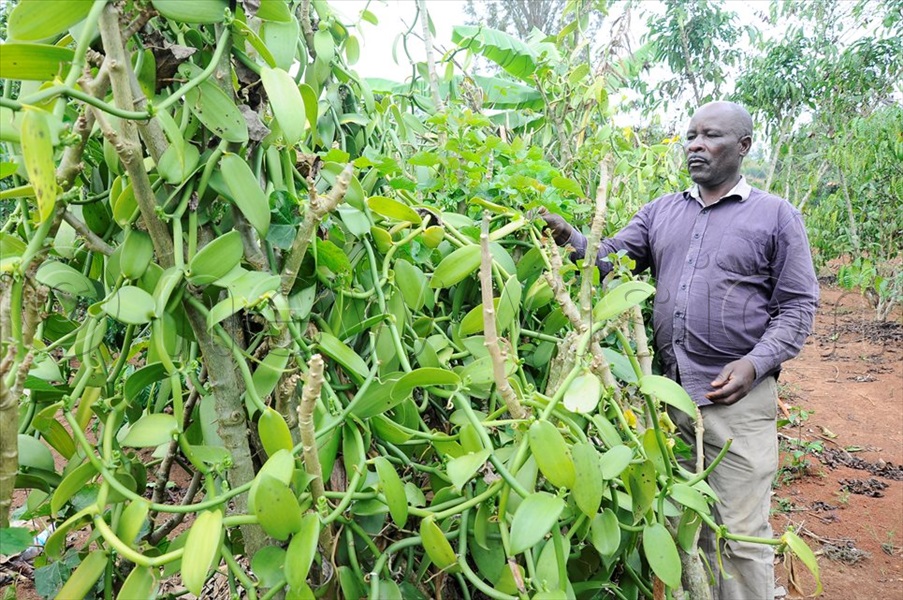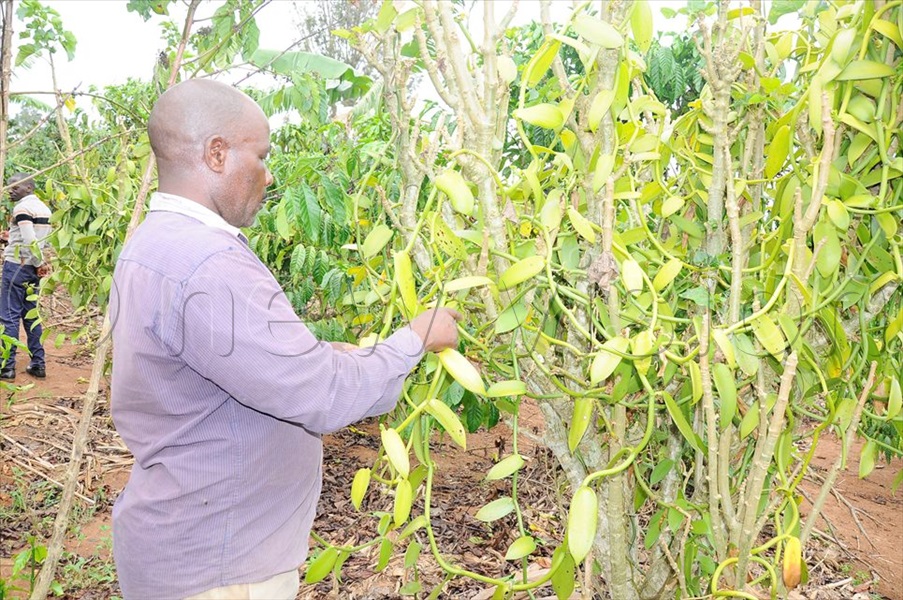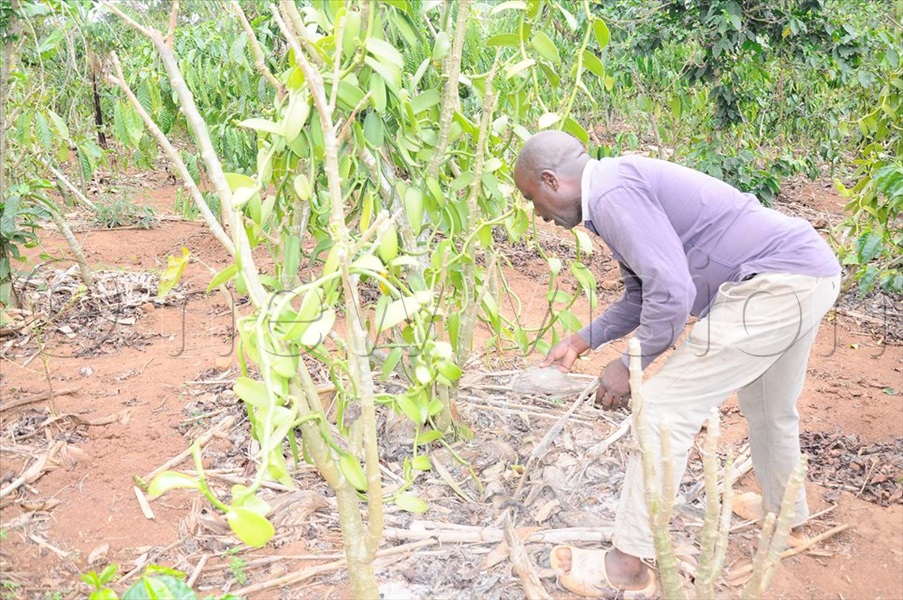By Umar Nsubuga
Vanillas are climbing plants that prefer high humidity and bright, indirect sunlight which require ample water and extremely warm temperatures and high humidity.
They need support from staking near the base of the vine to grow up.
This is why intercropping with bananas to keep the shade, but also allowing some light and using poles as support trees are recommended.

Plants are planted at least two and a half metres from each other.
Simon Kayondo one of the vanilla farmers in Nabyewanga village in Lwengo district, says one can use multiple stakes or a wooden pole made for climbing plants.
He says the pole can be cut from a mutuba tree or a tree locally known as ekiroowa.
He says vanilla beans require enough water for them to remain fresh and productive.
He says if carelessly looked after, vanilla plants cannot blossom and as a result, they cannot develop vanilla bean pods.

Vanilla will not blossom in low light conditions.
If your plant does not blossom, it will not develop vanilla bean pods.
Kayondo says vanilla plants need to be pollinated to produce vanilla bean pods.
“A farmer can hand pollinate vanilla flowers, however, the process calls for a lot of care,” he says.
He, however, says experience makes it easier.
“To pollinate a vanilla bean plant you will need to remove some pollen (with a toothpick) from the anther of a flower and place it on the stigma. This process is best done mid-morning. The stigma of a vanilla bean plant is covered by a shield. You will need to gently peel this shield back, place the pollen along the column, and then push the shield back in place,” Kayondo says.

He says should the process work, one will see vanilla pods start to form within one week.
“After 8-9 months you will be able to harvest your vanilla beans.
Uses of vanilla
Vanilla is largely used as a spice in all kinds of beverages including soft and hard drinks, teas and medicines. It can be consumed as extracted oil, powder or as dried and sliced beans.
When to harvest vanilla
He says a farmer can harvest vanilla beans as soon as the tips begin to turn yellow and this will happen approximately 8-9 months after pollination. Best harvesting practices include ‘sweating’ and then drying.
“You will need to sweat and then sun dry/cure the vanilla bean pods for about a month until they are dark brown and leathery,” says Martin Kisekka, another vanilla farmer in Mukono.
Kisekka explains that sweating involves wrapping the vanilla beans in a blanket for 36-48 hours until the beans start to develop a light brown colour.
Sweating helps reduce the moisture in the vanilla.
“After the sweating process, sundry the vanilla beans for up to a month until the vanilla beans turn dark brown and leathery, they will be ready for storage and sale,” he says.
He says the drying beans should be shielded from the rain.
How to plant vanilla
Dig a one-foot hole and plant three feet of vanilla veins, leaving about two feet above the ground that you tie on a pole to support its growth.
Vanilla can only be intercropped with matooke, which also provides shade for the vanilla.
Do not use a hoe in a vanilla garden because the roots are almost on top of the soil and can easily be cut.
After three weeks, cover the garden with grass (mulching) to prevent weeds from growing.
Use a slasher to remove weeds and mulch so that you cover the roots and shield them from the sun.
You should only plant 1,500 plants per acre.





